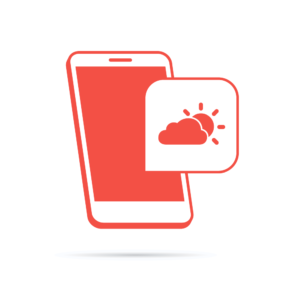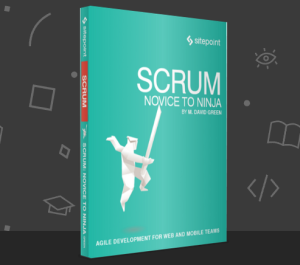
If you first heard about “lean methodology” in 2011, when serial entrepreneur Eric Ries coined the term, you probably thought it referred to Jenny Craig or the Paleo diet, not a set of principles for keeping costs low and delivering products as quickly as possible.
Now, of course, thousands of startups, as well as many big businesses, are “lean” (or at least, they claim to be.)
But even if you’re constantly iterating and innovating, don’t forget the most crucial component of the process: testing your MVP.
Here are seven new ways to see whether your product will resonate with the market.
1. Wizard of Oz
This test involves a little bit of trickery. Your customers or users believe they’re experiencing the true product, but you’re doing all the behind-the-scenes work manually.
Not only can you see whether you’ve got a desirable good or service before you actually build it, but you can also identify the pain points of that good or service.
Jason Boehmig, co-founder of Ironclad, relied on this strategy when developing the company’s eponymous software. Ironclad is an automated legal assistant, helping companies get paperwork and contracts completed much more efficiently. In the beginning, however, there was no technology; Boehmig, a former lawyer, was finding documents, requesting signatures, and filling out everything by hand.
He said this exercise showed him exactly what Ironclad’s software needed to do. Plus, the excitement of the original customers proved that Ironclad filled a real need.
2. Fake Door
If you’ve already got a customer base, using the fake door test is a fantastic way to gauge whether they’ll be interested in a new product or feature.
That’s what online marketplace CustomMade did. The team was thinking about introducing the option to save other users’ projects for inspiration. Instead of developing the functionality and then seeing if it was popular, they simply added the “Save” button. Just the button—there still wasn’t a save feature.
A vast percentage of site visitors clicked the button, so CustomMade built the entire capability.
The good news: You don’t need to have a website to employ this strategy. It also works if you’ve got a large social media following. Build a landing page for the product, share it on your networks using customized links, and track the click-through rate. This exercise will tell you how many of your followers would be interested in buying or signing up.
(Oh, and that landing page? Make sure you write something along the lines of “Coming Soon!”, so people don’t get too confused or frustrated.)
3. Audience Building
The most famous example of audience building is probably Product Hunt. After realizing there was no easy way to find the coolest new tech gadgets and products, Ryan Hoover started an email newsletter called “Product Hunt”.
It took him just 20 minutes. Even better? Only 14 days later, Hoover already had 130 subscribers, many of whom were Silicon Valley influencers.
Now, Product Hunt is valued at $22 million.
Copying Product Hunt’s approach is fairly simple. Pick a low-cost (preferably free) method of building a virtual community (Slack, a newsletter, a Facebook group, etc.) that’s tied to your end product.
For example, let’s say you want to build a platform that connects college students looking for portfolio work with businesses looking for freelance interns, as my brilliant friend Lauren Holliday has done with Freelanship. To test the market for Freelanship, Lauren could have first started an informal “matchmaking” service for millennials and startups. The more interest this service garnered, and the more people signed up, the more confident Lauren would be that she could make it a real business.
4. Micro-Surveys
The problem with surveys? They’re unreliable. Between survey fatigue, low response rates and sampling bias, and non-actionable results, it’s easy for a survey to go wrong, and hard for it to go right.
Luckily, you can avoid most, if not all, of those pitfalls with micro-surveys. A micro-survey is just one or two questions long. Thanks to the brevity, your users or customers are extremely likely to take it. Plus, it’s also very targeted, so your data will be relevant.
Let’s say you’re building your MVP for a cloud data security dashboard, and you want to know if your customers would like a Dropbox integration. When you’re running user tests, ask every single person who tries to upload a document:
“Do you use Dropbox?”
If yes, ask:
“How would you use a Dropbox integration?”
Make your micro-survey questions specific but open-ended. In addition to pop-ups, you can also deliver your micro-surveys via email or a redirect page on your website.
5. Competition Analysis
There are already people testing your hypotheses for free: your competitors. You should look at their product(s) and ask yourself two things:
- What’s the rationale for X feature?
- What’s the rationale for the lack of Y feature?
Imagine that you’re creating an app for listening, sharing, and discovering podcasts. You’d definitely want to look at the Apple Podcast app, Overcast, and Stitcher. After exploring these apps, your notes might look like:
What’s the rationale for Overcast’s “Smart Speed” feature, which cuts out long pauses? Most likely answer: Dead air makes people more likely to stop listening in the middle of a podcast. This feature probably increases Overcast’s engagement.
What’s the rationale for Apple’s lack of a playlist feature? Most likely answer: Podcasts are much longer than individual songs. Listeners probably don’t need to organize the specific episodes they’re going to listen to in advance. Plus, unlike music, you normally only play a podcast once.
This exercise will help you make educated decisions about what—and what not—to include in your own product. Of course, you don’t want to assume that just because your rivals are using a specific approach, you should use that approach too. If you identify a feature that’s not included but should be, you should obviously build it into your MVP.
6. Crowdfunding
Many of these tests require some capital. Fortunately, there’s a way to test your MVP that not only can be run with zero capital, it’ll actually generate you some cash: crowdfunding.
Choose a platform (Kickstarter and Indiegogo are probably your best bets), create a prototype or demo video, and see the reaction you get.
Unlike a normal crowdfunding campaign, you don’t want to do everything in your power to incentivize backers. After all, this is a test to see whether a market for your idea exists naturally.
7. Software Tests
There are tons of software options out there for validating your MVP. I’d use these to complement (rather than replace) your other testing mechanisms.
QuickMVP offers a one-stop shop, enabling you to record and analyze your customer interviews, build and test landing pages, and calculate metrics such as market size and profit margin.
OpenHallway lets you create test scenarios and record user results. This app is great for learning how your users interact with your MVP, if your user flow has any issues, and which features people find most appealing.
Five Second Test helps you gather first impressions of your landing page, brochure, logo, marketing material, or home page.
If you’re looking for a wireframing or prototyping tool, check out [Justinmind, InVision, or Balsamiq].
These seven techniques will help you test for product-market fit without wasting valuable time or resources.
Frequently Asked Questions (FAQs) about Minimum Viable Product Testing
What is the concept of a Minimum Viable Product (MVP)?
A Minimum Viable Product (MVP) is a product with just enough features to satisfy early customers and provide feedback for future product development. It’s a strategy used by startups and entrepreneurs to quickly test their product’s viability in the market. The goal is to release a product as quickly as possible to gauge interest and gather user feedback for improvements.
How does Fake Door Testing work in MVP?
Fake Door Testing is a method used to measure interest in a product or feature before it’s fully developed. It involves creating a ‘fake door’ or a call-to-action for a feature that doesn’t exist yet. When users click on it, they receive a message explaining that the feature is not yet available. The number of clicks can help determine if the feature is worth developing.
What are the benefits of Fake Door Testing?
Fake Door Testing helps to validate a product idea before investing significant time and resources into development. It provides valuable insights into customer interest and can help prioritize features based on user demand. It’s a cost-effective way to test a product concept and can help avoid the risk of building a product that nobody wants.
How can I implement Fake Door Testing for my product?
Implementing Fake Door Testing involves creating a ‘fake door’ or a call-to-action for a feature that doesn’t exist yet. This could be a button, a link, or an advertisement. When users click on it, they should receive a message explaining that the feature is not yet available. The number of clicks can then be tracked to measure interest.
What are some other ways to test an MVP?
Besides Fake Door Testing, there are several other ways to test an MVP. These include Explainer Videos, Landing Pages, Crowdfunding, Pre-Orders, and Wizard of Oz Testing. Each method has its own advantages and can provide valuable insights into the viability of a product.
What is Wizard of Oz Testing?
Wizard of Oz Testing is a method where users believe they are interacting with a fully functioning product, but behind the scenes, the operations are being carried out manually. This allows for testing of complex services without the need for full development.
How can I choose the right testing method for my MVP?
The right testing method for your MVP depends on your product, target audience, and resources. It’s important to consider the cost, time, and complexity of each method. You should also consider the type of feedback you want to gather and how you plan to use it to improve your product.
What should I do after testing my MVP?
After testing your MVP, you should analyze the feedback and data you’ve gathered. This can help you understand what works and what doesn’t, and make necessary adjustments to your product. You may need to iterate on your MVP several times before you find a product-market fit.
Can I use multiple testing methods for my MVP?
Yes, using multiple testing methods can provide a more comprehensive understanding of your product’s viability. Different methods can provide different types of feedback, and using them in combination can give you a more complete picture of your product’s potential.
How can I ensure the success of my MVP?
The success of your MVP depends on a variety of factors, including the quality of your product, market demand, and your ability to iterate based on feedback. It’s important to listen to your users, continuously test and improve your product, and be willing to pivot if necessary.
Aja Frost is a writer, tech/design geek, and podcast addict. Check out her site or say hi on Twitter.



